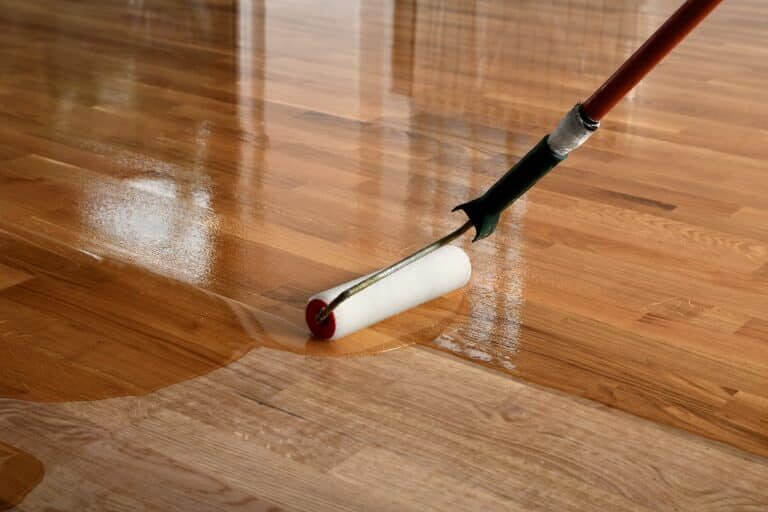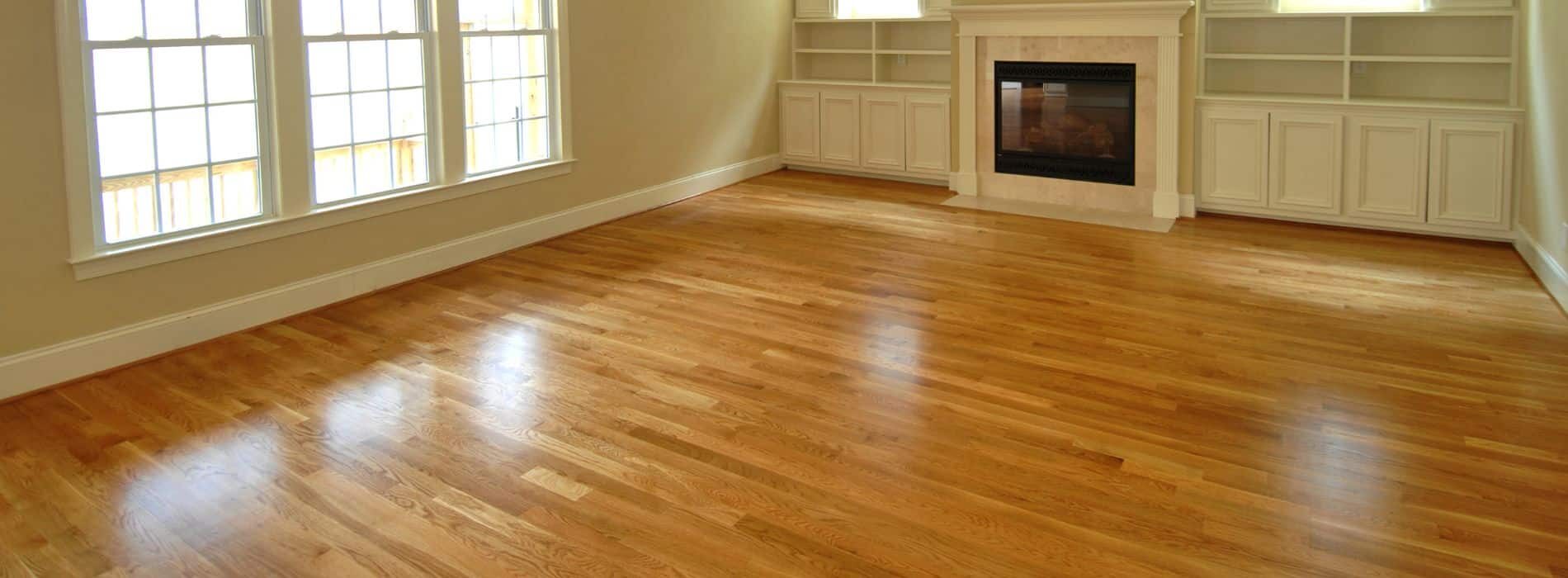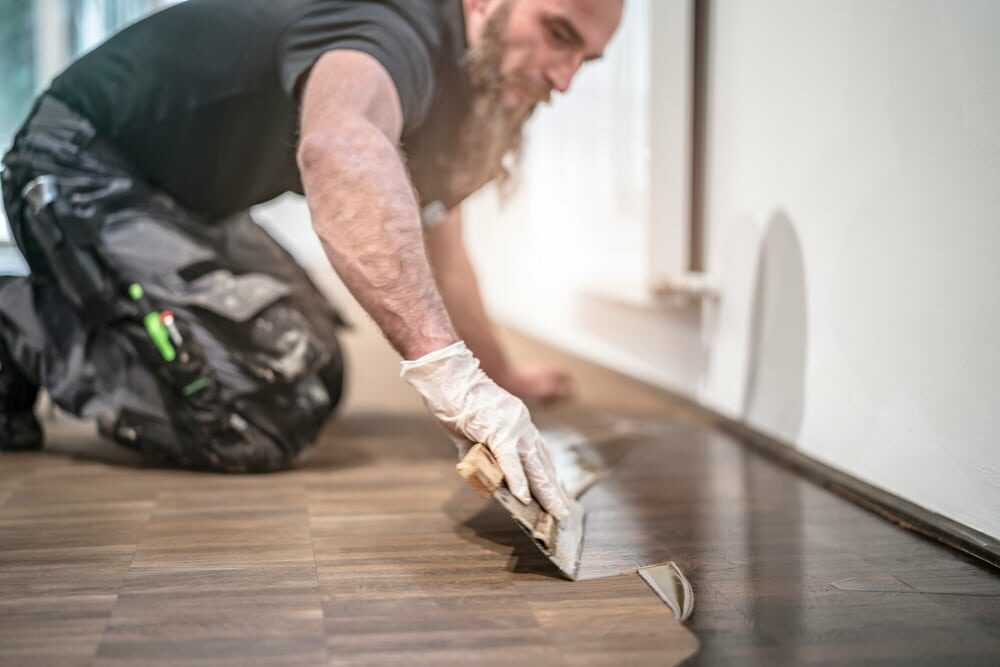London:
Nationwide:
The Best Treatments for Aging Kitchen Worktops
Posted on January 1, 2024
Kitchen Worktop sanding
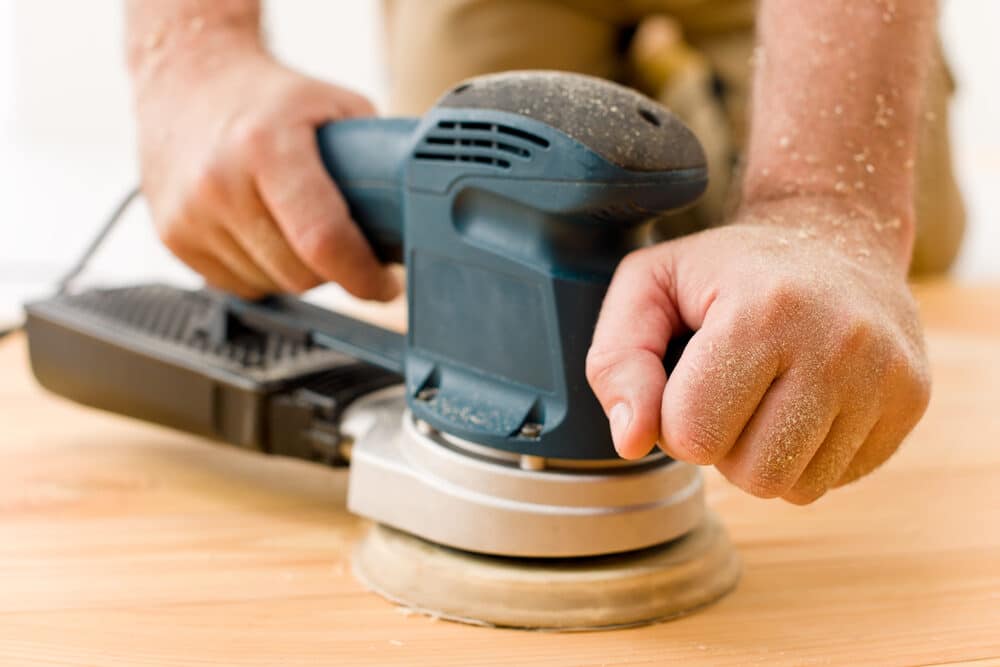
Revitalizing Your Countertops: Top Treatments for Aging Kitchen Worktops
Welcome to our comprehensive guide to rejuvenating and preserving your ageing kitchen worktops. In the heart of every home lies the kitchen, a place where memories are made and shared over meals. Central to this culinary haven are the worktops, surfaces that bear the brunt of daily activities, from meal preparations to casual family gatherings. Over time, these surfaces endure wear and tear, losing their initial lustre and functionality.
In this post, we delve into the world of kitchen worktops restoration, exploring the signs of ageing and the best practices to restore their beauty and extend their lifespan. Whether you’re dealing with faded laminate, scratched wood, or stained stone, we have tailored solutions for every material. We understand that your kitchen worktop is not just a part of your home’s aesthetics but also a testament to the stories and experiences shared in your kitchen.
Our journey will cover everything from identifying the type of material your worktop is made of to specific cleaning and maintenance tips that will rejuvenate even the most worn-out surfaces. We’ll provide step-by-step guides on treating different materials, DIY tricks for quick fixes, and advice on when to seek professional help.
By the end of this guide, you’ll be equipped with the knowledge and techniques to not only revive your ageing kitchen worktops but also protect them for years to come. Let’s bring new life to your kitchen’s centrepiece and ensure it continues to be a place of warmth, joy, and culinary creativity.
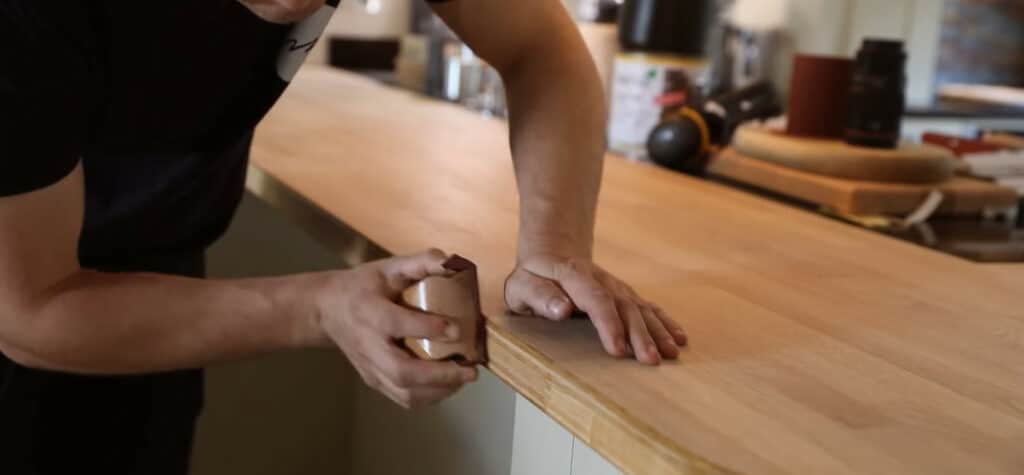
Understanding Your Worktop Material
Before diving into the treatments and maintenance strategies for your kitchen worktops, it’s crucial to understand the material they are made from. Different materials not only have distinct appearances and feels but also unique needs when it comes to care and repair. In this section, we’ll help you identify common worktop materials and discuss how each one ages over time.
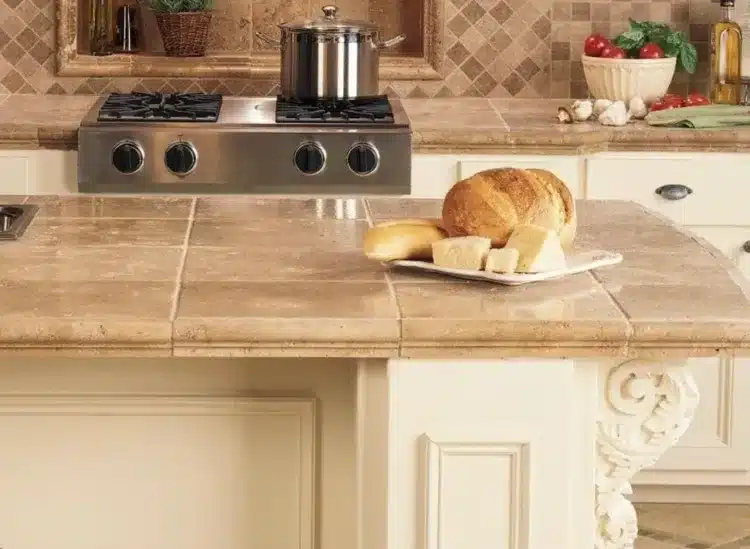
Identifying Common Materials
- Granite: Known for its durability and natural beauty, granite is a popular choice for kitchen worktops. It’s recognisable by its speckled appearance, which comes from the various minerals in the stone.
- Marble: Marble is another natural stone option, prized for its elegant veining and soft appearance. It’s typically more porous than granite, making it more susceptible to staining.
- Laminate: Laminate worktops are made from layers of plastic bonded to particleboard or plywood. They come in a wide variety of colours and patterns, including those that mimic the look of natural stone or wood.
- Solid Wood: Wooden worktops bring warmth and a classic feel to the kitchen. Common types include oak, maple, and walnut. Wood is naturally porous and can be prone to scratches and water damage if not properly sealed.
- Quartz: This engineered stone is made from crushed quartz mixed with resin. It’s non-porous, highly durable, and available in a range of colours and patterns.
- Stainless Steel: Favoured in professional kitchens for its hygienic qualities, stainless steel is durable, heat-resistant, and easy to clean, though it can show scratches and fingerprints.
- Concrete: Growing in popularity, concrete worktops offer an industrial look and are custom-fabricated. They need to be sealed regularly to prevent staining and water damage.
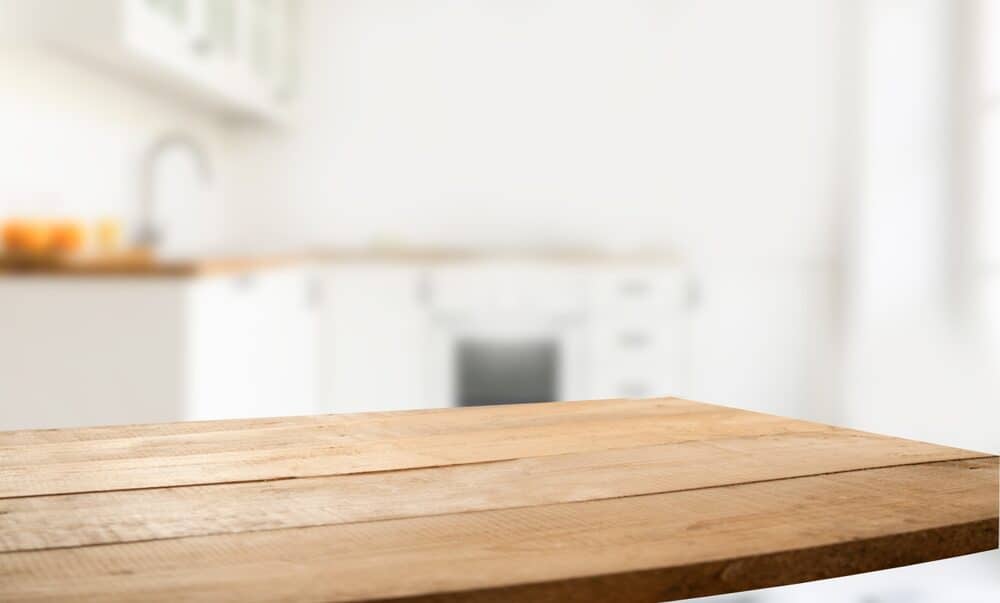
How Different Materials Age
Each material ages differently based on its properties.
- Granite and marble: These stones can last a lifetime but may show wear through dullness or minor chipping. Regular sealing is essential to prevent stains.
- Laminate: Over time, laminate can chip, crack, or peel, especially in areas of heavy use.
- Wood: Wooden worktops age gracefully if maintained, developing a patina over time. They can be susceptible to water damage, warping, and scratches.
- Quartz: Being non-porous, quartz resists staining and doesn’t require sealing, but prolonged exposure to direct sunlight can cause discoloration.
- Stainless steel maintains its look over time, though scratches can accumulate. However, these can add to the desired patina for some homeowners.
- Concrete: Concrete can develop hairline cracks and requires regular sealing to maintain its appearance and functionality.
In the following sections, we’ll explore specific treatments and maintenance tips for each of these materials to ensure your worktop remains in prime condition for years to come.
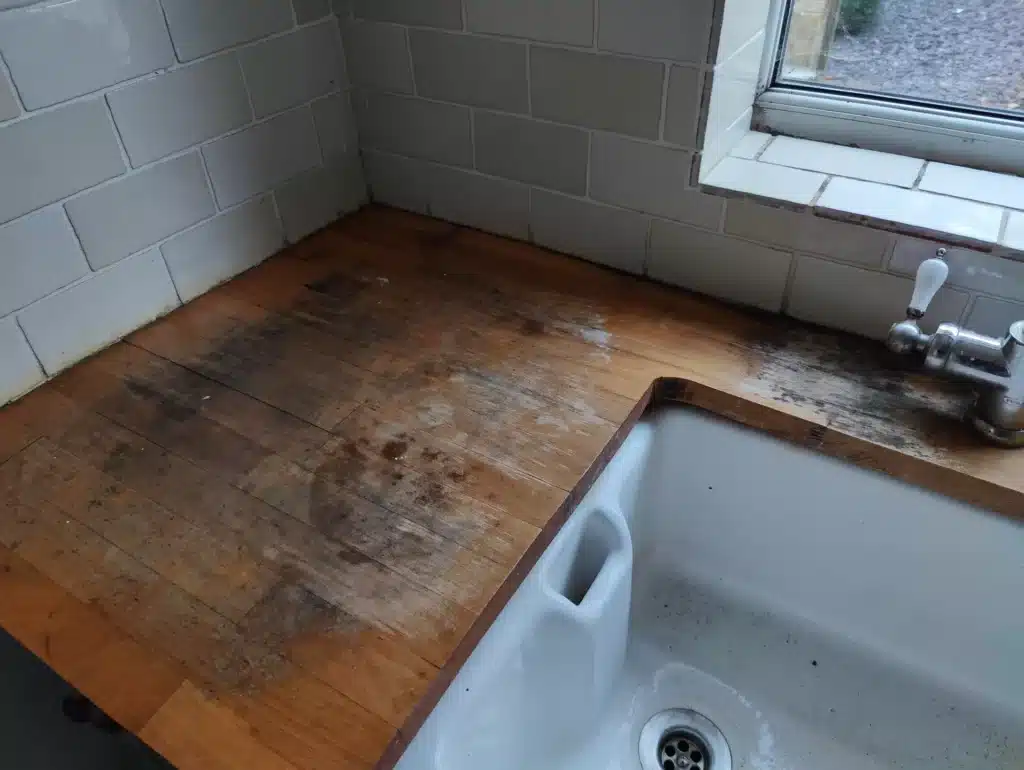
Cleaning and maintenance basics
Maintaining your kitchen worktops is essential for prolonging their life and preserving their appearance. Regardless of the material, there are some universal practices that can help keep your work surfaces looking their best. This section outlines basic cleaning and maintenance tips that apply to most worktop materials.
Daily cleaning tips
- Wipe Spills Promptly: To avoid stains, wipe up spills as soon as they happen, especially on porous surfaces like wood or marble.
- Use Gentle Cleaning Solutions: Avoid abrasive or acidic cleaners that can damage the worktop surface. A solution of mild dish soap and warm water is usually safe for most materials.
- Soft Cloth or Sponge: Use a soft cloth or non-abrasive sponge to clean the surface. Avoid scouring pads, which can scratch certain materials.
- Dry After Cleaning: Prevent water spots and mineral deposits by drying the worktop with a clean, dry cloth after cleaning.
- Regular Dusting: Dust and debris can cause scratches over time, especially on softer surfaces. Regular dusting can help maintain the worktop’s finish.
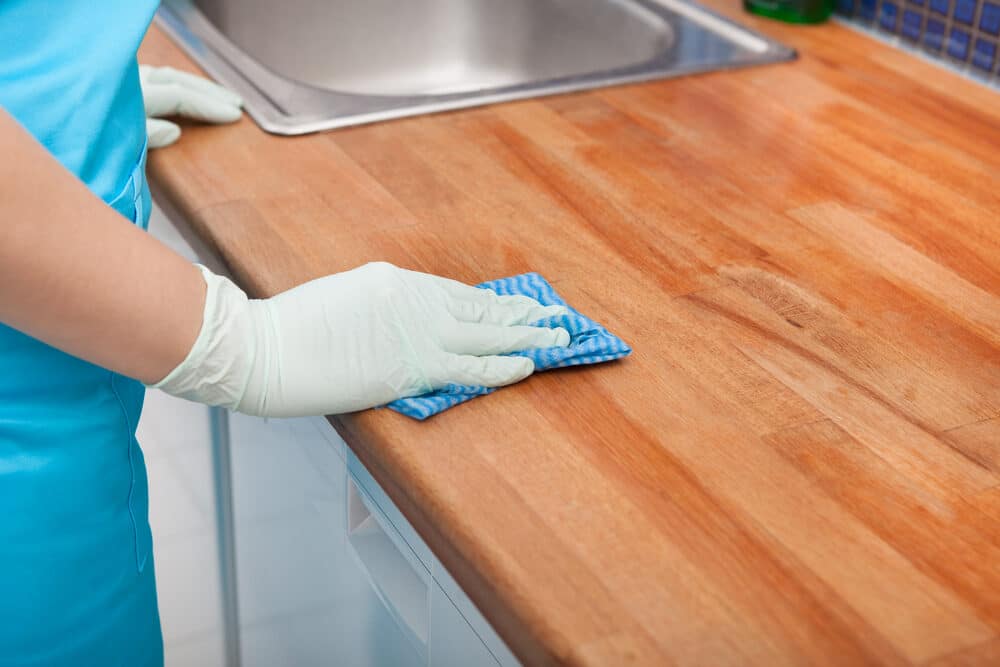
Preventative Maintenance Strategies
- Use Cutting Boards: Always use cutting boards to prevent scratches and cuts on the worktop surface.
- Hot Pads and Trivets: Protect your worktops from heat damage by using hot pads or trivets under hot pots and pans.
- Avoid Standing Water: Especially on wood and laminate, standing water can cause damage. Wipe up any pooled water promptly.
- Re-seal When Necessary: For natural stone worktops like granite and marble, re-sealing periodically is crucial to prevent stains and water damage.
- Regular Inspections: Periodically check for signs of wear or damage, such as chips, cracks, or loose edges, and address these issues promptly.
- Avoid Harsh Chemicals: Steer clear of bleach, ammonia, or other harsh chemicals that can etch or discolour the surface.
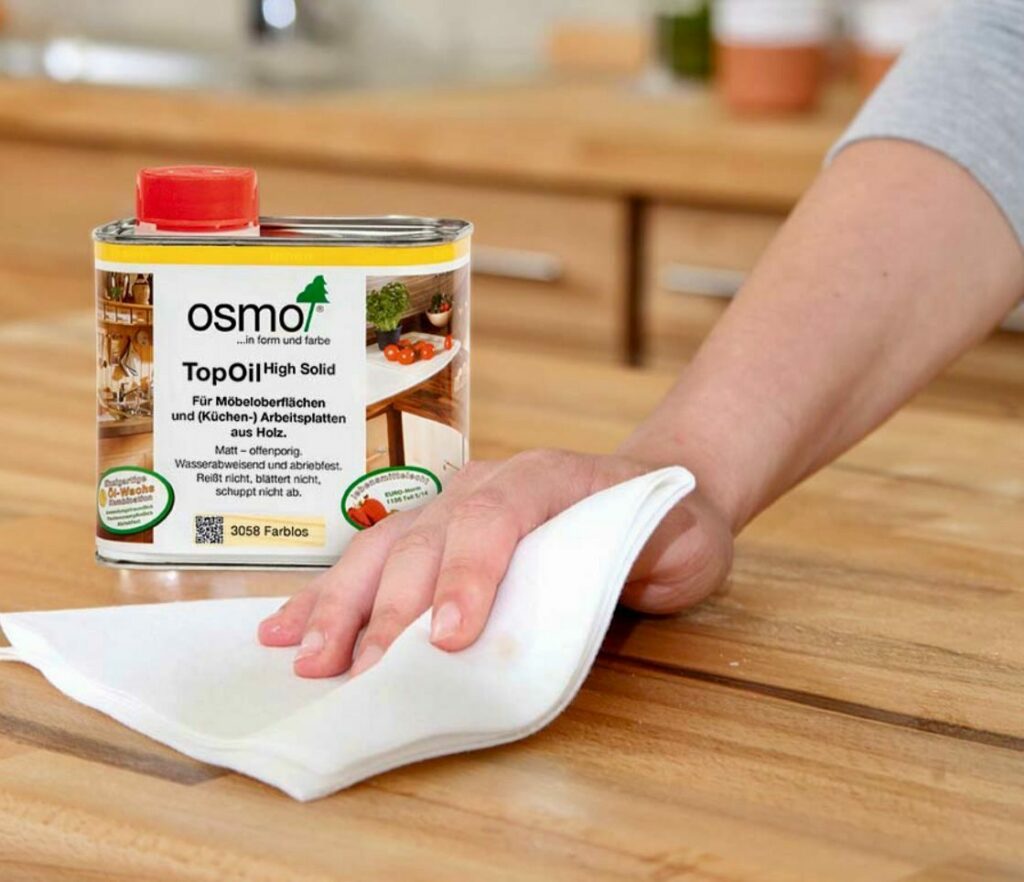
Special Considerations for Different Materials
While these basic tips apply to most worktops, certain materials require additional care:
- Wood: Oiling or waxing wooden worktops can prevent drying and cracking.
- Stone: Use cleaners specifically designed for natural stone to avoid damaging the surface.
- Laminate: Avoid excessive water exposure along seams to prevent swelling.
- Stainless steel: Use specific stainless steel cleaners to maintain its shine and prevent smudging.
By following these cleaning and maintenance basics, you can significantly extend the life of your kitchen worktops and keep them looking as good as new. In the next sections, we’ll delve deeper into specific treatments for different types of worktop materials.
Treatment Options for Wooden Worktops
Wooden worktops add warmth and natural beauty to any kitchen, but they require specific care to maintain their appearance and durability. This section explores various treatment options to keep your wooden worktops in excellent condition.
Sanding and refinishing
- Sanding: Over time, wooden worktops can develop scratches, stains, or uneven surfaces. Sanding is an effective way to remove these imperfections. Start with coarse-grit sandpaper and gradually move to finer grits for a smooth finish.
- Refinishing: After sanding, apply a suitable finish to protect the wood. Options include food-safe mineral oil, beeswax, or a polyurethane coating for a more durable finish. The choice depends on your preference for appearance and the level of protection needed.
- Regular Maintenance: Refinish your wooden worktops annually or biannually, depending on usage and wear.
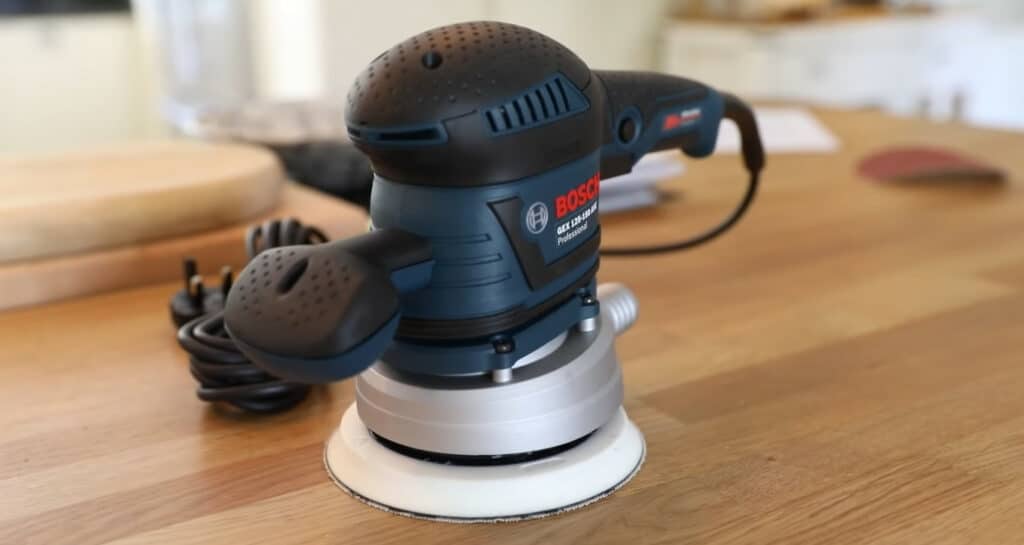
Oiling and sealing
- Oiling: Regular oiling is crucial for preventing wood from drying out and cracking. Use food-safe oils like mineral oil or tung oil. Apply the oil liberally, let it soak in, and then wipe off any excess.
- Sealing: For extra protection, especially in areas near sinks, consider using a sealer. Sealers provide a barrier against water and stains, reducing the risk of damage.
- Frequency: Oil your wooden worktops every few months, or more frequently if they start to look dry or dull.
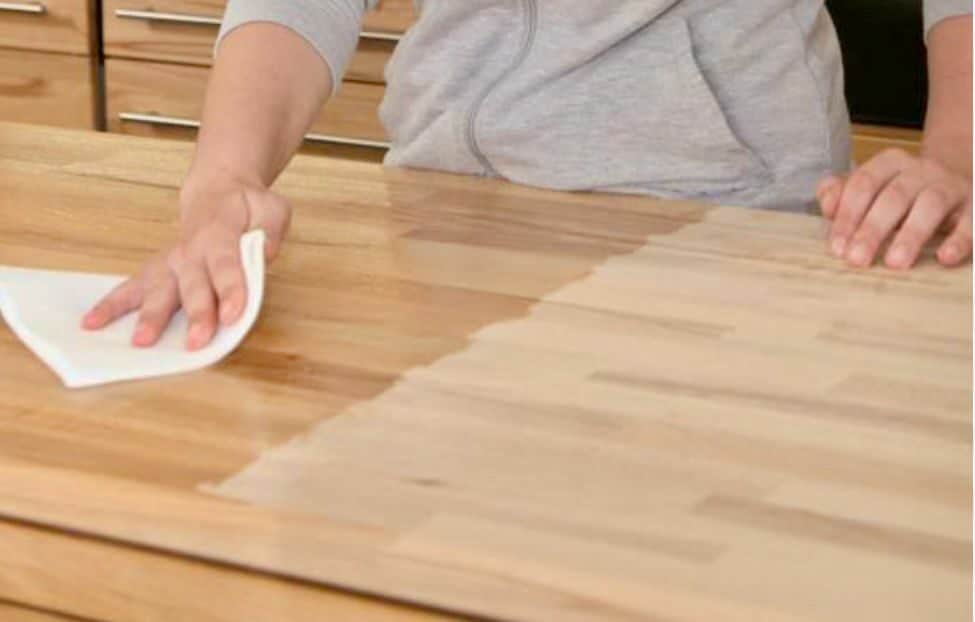
Repairing Scratches and Dents
- Minor Scratches: For small scratches, lightly sand the area and reapply oil or finish. This simple treatment can make minor scratches virtually disappear.
- Deeper Dents and Scratches: Fill deeper dents with wood filler that matches the colour of your worktop. After the filler dries, sand the area smooth and refinish.
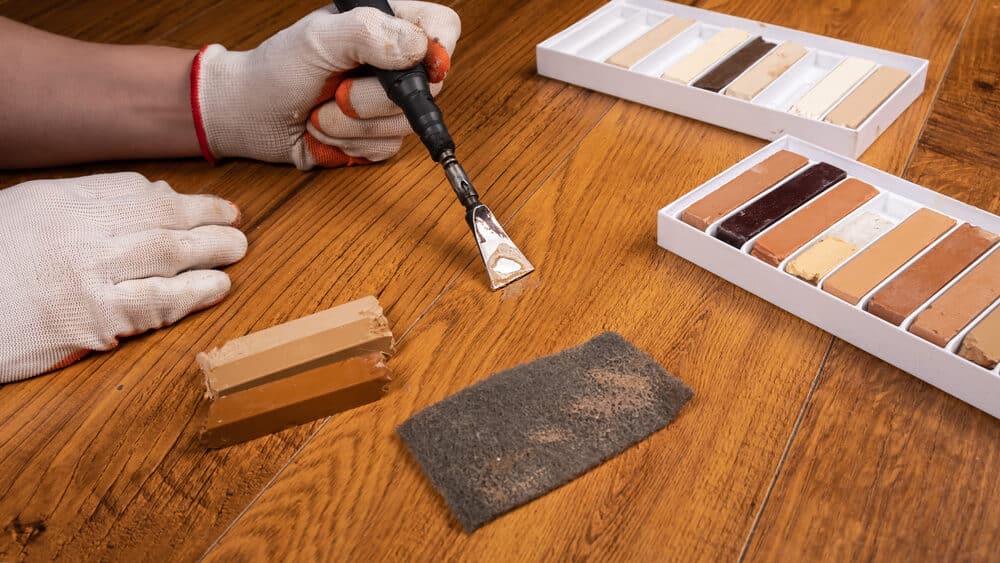
Preventing Damage
- Use Coasters and Cutting Boards: Protect the surface from scratches, heat, and moisture by using coasters, trivets, and cutting boards.
- Avoid Direct Sunlight: Prolonged exposure to sunlight can fade or discolour wood. Use blinds or curtains to protect your work surfaces from direct sunlight.
- Control Humidity: Wood can warp in conditions that are too humid or too dry. Maintain a consistent indoor humidity level to prevent warping.
By following these treatment options, you can ensure that your wooden worktops remain a stunning and functional feature in your kitchen for years to come. Regular care not only preserves the wood’s natural beauty but also enhances the overall value of your kitchen.
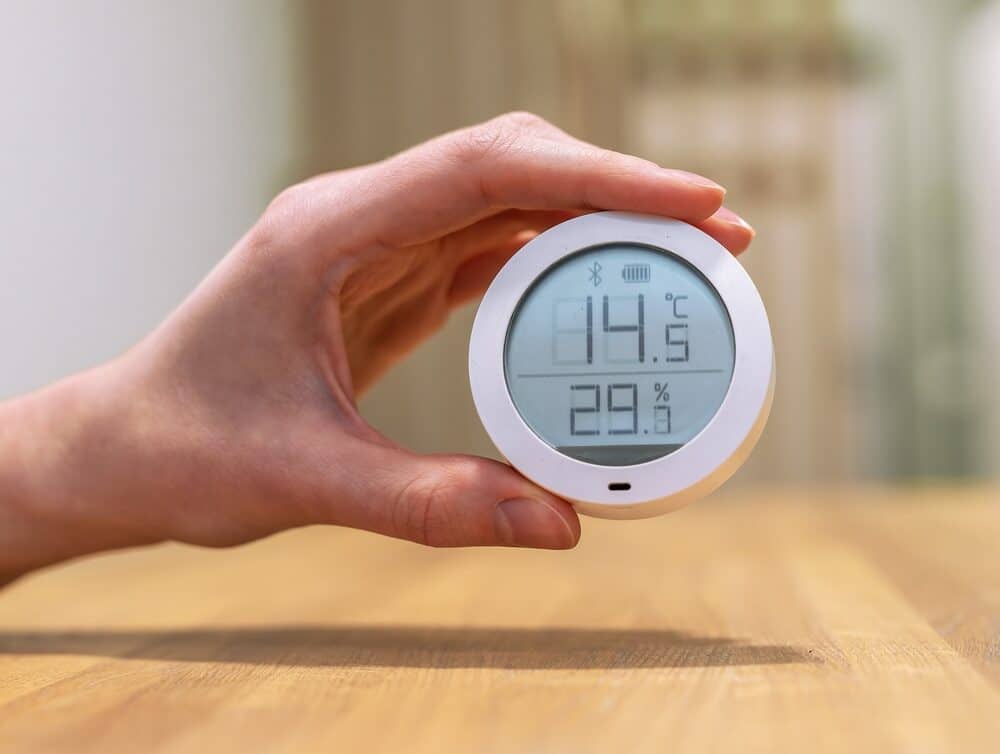
Revitalising Laminate and Composite Surfaces
Laminate and composite worktops are popular due to their affordability and variety of designs. While they are generally low-maintenance, over time, they can show signs of wear such as scratches, dullness, or peeling. This section provides effective ways to revitalise these surfaces and extend their lives.
Deep cleaning techniques
- Gentle Cleaning Solutions: Use a mix of mild dish soap and water for regular cleaning. For tougher stains, a solution of baking soda and water can be applied gently with a soft cloth.
- Avoid Abrasive Scrubbers: Use a soft cloth or sponge to avoid scratching the laminate or composite surface.
- Rinse Thoroughly: After cleaning, rinse with clean water and dry with a soft towel to prevent water spots.
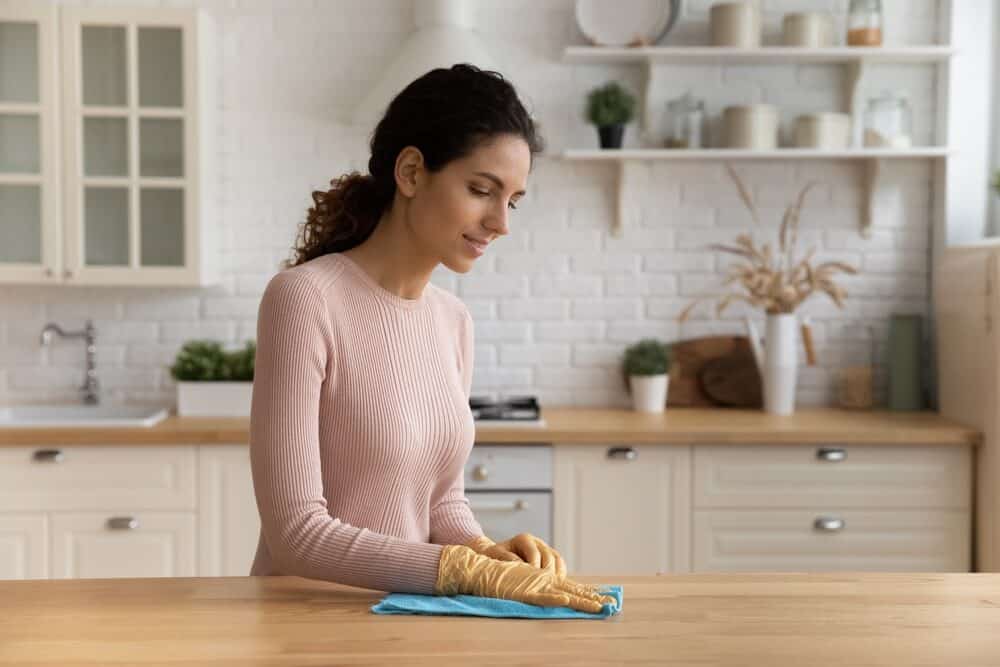
Repairing scratches and chips
- Minor Scratches: Apply car wax or a laminate repair paste to fill in small scratches. Follow the product instructions for the best results.
- Chips and deeper scratches: Use a laminate repair kit that matches the colour of your worktop. Fill the chip or scratch, then smooth and seal as directed.
Restoring Shine
- Surface Polish: Use a laminate polish or countertop wax to restore shine to dull surfaces. Follow the manufacturer’s instructions for application and buffing.
- Consistent Care: Regular cleaning and occasional polishing can maintain the sheen and appearance of laminate and composite worktops.

Preventing future damage
- Use Cutting Boards and Trivets: Protect the surface from scratches and heat damage by using cutting boards for chopping and trivets for hot pots and pans.
- Avoid Excessive Water Exposure: Especially near seams and edges, prolonged exposure to water can cause swelling or peeling. Wipe up spills promptly.
- Limit Direct Sunlight: Prolonged exposure to sunlight can fade the colour of laminate and composite surfaces. Use window treatments to limit direct sunlight.
By implementing these revitalization and maintenance tips, you can significantly improve the appearance and longevity of your laminate and composite kitchen worktops. Regular care and timely repairs will keep these surfaces looking fresh and functional, enhancing the overall appeal of your kitchen.
Caring for Stone Worktops: Granite, Marble, etc.
Stone worktops, such as granite and marble, are prized for their natural beauty and durability. However, they require specific care to maintain their elegance and longevity. This section focuses on the best practices for caring for stone worktops, ensuring they remain a stunning feature in your kitchen.
Sealing and polishing
- Regular Sealing: Natural stone is porous and can absorb stains. Regular sealing helps protect against stains and damage. Granite typically needs sealing once a year, while marble may require more frequent sealing due to its higher porosity.
- Polishing: Stone polish can enhance the shine and colour of your worktop. Use a polish formulated for the specific type of stone you have, following the manufacturer’s instructions for application.
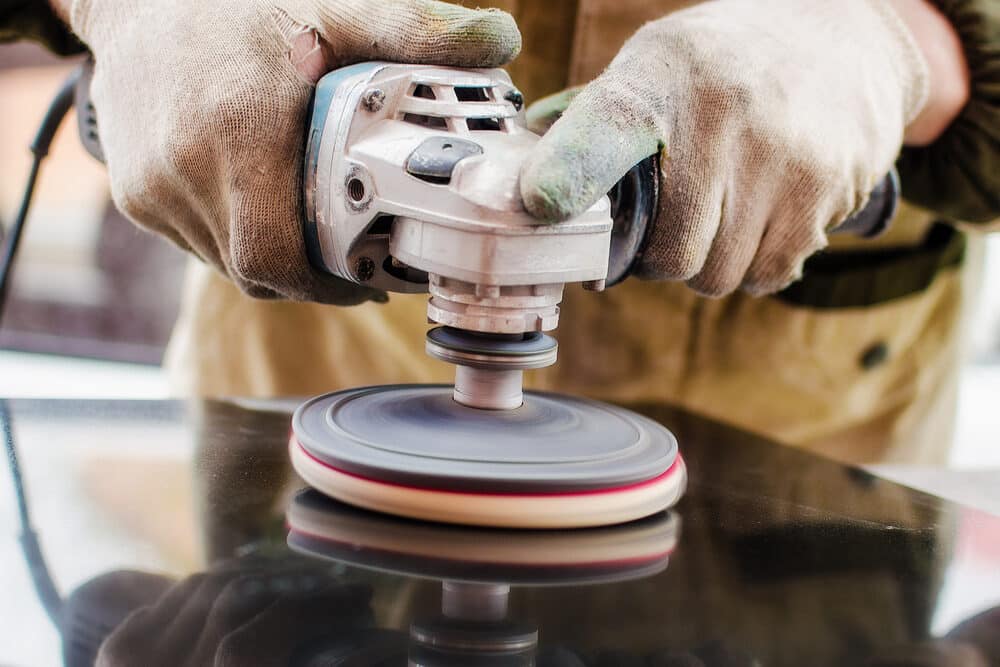
Cleaning and stain removal
- Daily Cleaning: Use a soft cloth and a mild detergent or a cleaner specifically designed for stone. Avoid acidic or abrasive cleaners, which can etch the surface.
- Stain Removal: For stains, a poultice made from baking soda and water can be effective. Apply the poultice to the stain, cover with plastic wrap, and leave it for 24-48 hours before wiping away.
Dealing with Cracks and Erosion
- Minor Cracks: Small cracks or chips can often be repaired with a colour-matched epoxy or resin. For the best results, consider hiring a professional.
- Erosion: Professional re-polishing services can address erosion or dulling from wear and tear.
Preventative Measures
- Use Coasters and Trivets: Protect your stone worktops from stains and heat by using coasters under beverages and trivets under hot pots and pans.
- Avoid Cutting Directly on the Surface: Use cutting boards to prevent scratches and preserve the integrity of the sealant.
- Spill Management: Clean spills immediately, especially acidic substances like wine, coffee, and fruit juices, which can etch the surface if left unattended.
Regular maintenance checks
- Sealant Integrity: Regularly check the integrity of the sealant by dripping water on the surface. If it beads up, the sealant is effective; if it soaks in, it’s time to reseal.
- Surface Inspection: Regularly inspect for any changes in texture, colour, or appearance, and address any issues promptly.
By adhering to these care guidelines, your stone worktops, whether granite, marble, or other natural stones, will continue to add beauty and value to your kitchen for many years. Proper maintenance not only preserves the aesthetic appeal but also ensures the longevity and functionality of these exquisite surfaces.
Upcycling aged worktops
Upcycling aged worktops is a creative and eco-friendly way to breathe new life into your kitchen without the need for a complete replacement. This approach not only saves resources but also allows for personal creativity and innovation. Here are some ideas and methods for upcycling aged kitchen worktops:
Creative Ideas for Repurposing
- Transform into Cutting Boards or Serving Platters: Sections of sturdy worktop materials like wood or granite can be repurposed into cutting boards or stylish serving platters.
- Create Shelves or Side Tables: Salvage larger pieces to craft unique shelves, side tables, or even small coffee tables, adding a rustic or modern touch to your space.
- Wall Art and Decorations: Use interestingly patterned or coloured sections as the basis for wall art or decorative pieces.
DIY Projects for Old Worktops
- Resurface with New Material: Apply a new layer of laminate, adhesive vinyl, or even a thin layer of concrete to completely change the look of your old worktops.
- Tile Overlays: Cover the worktop with ceramic or glass tiles for a fresh, durable surface. This works especially well for worktops with a stable, flat base.
- Painting and Stencilling: Specially formulated paints can be used to rejuvenate and transform your worktops. Use stencils for patterns and unique designs.
Incorporating new designs
- Outdoor Kitchen or Workshop: Use old worktops to build an outdoor kitchen area or as a surface in a garage or workshop.
- Garden Features: Stone or concrete worktops can be repurposed as outdoor garden tables or integrated into landscaping designs.
Sustainability Considerations
- Reduce Waste: Upcycling is an excellent way to reduce waste, giving materials a second life and decreasing the environmental impact of new productions.
- Eco-Friendly Finishes: When repurposing, consider using environmentally friendly paints, adhesives, and finishes to minimise ecological impact.
- Community Sharing: Share excess materials with community groups or online platforms where DIY enthusiasts can use them for their own projects.
By exploring these upcycling options, you not only give a second life to your aged worktops but also add a unique and personal touch to your home or garden. Upcycling encourages creativity and sustainability, making it a rewarding endeavour for any homeowner.
Sustainable Practices in Worktop Care
Incorporating sustainable practices into the care and maintenance of kitchen worktops is not only beneficial for the environment but also for the health and safety of your home. This section highlights eco-friendly methods and considerations to ensure your workplace care routine is as green as possible.
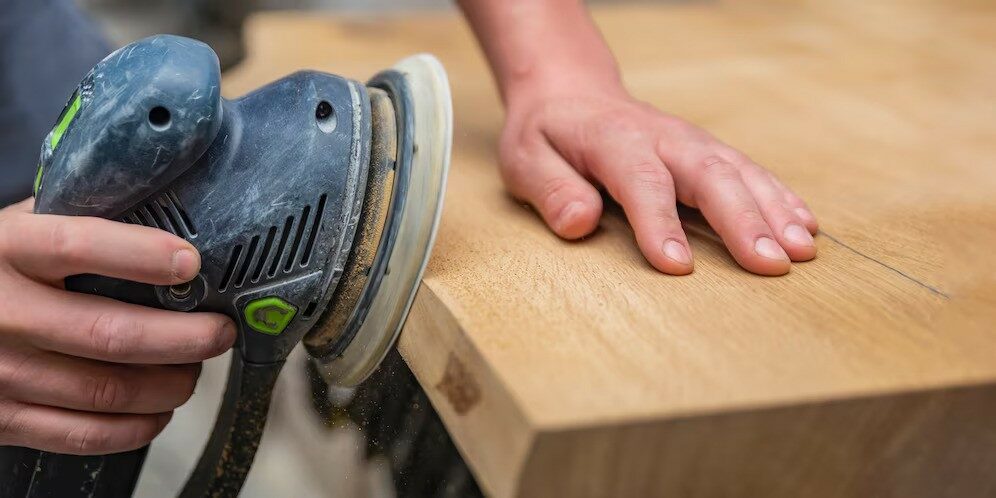
Eco-Friendly Products and Methods
- Natural Cleaning Solutions: Opt for homemade or eco-friendly cleaning products. A mix of vinegar and water can work for many surfaces, while baking soda is great for tougher stains. These options are biodegradable and free from harmful chemicals.
- Sustainable Sealing Options: For wood and stone worktops, look for sealants and oils that are environmentally friendly, low in volatile organic compounds (VOCs), and sustainably sourced.
- Microfiber Cloths: Use microfiber cloths for cleaning. They are effective, reusable, and reduce the need for disposable paper towels.
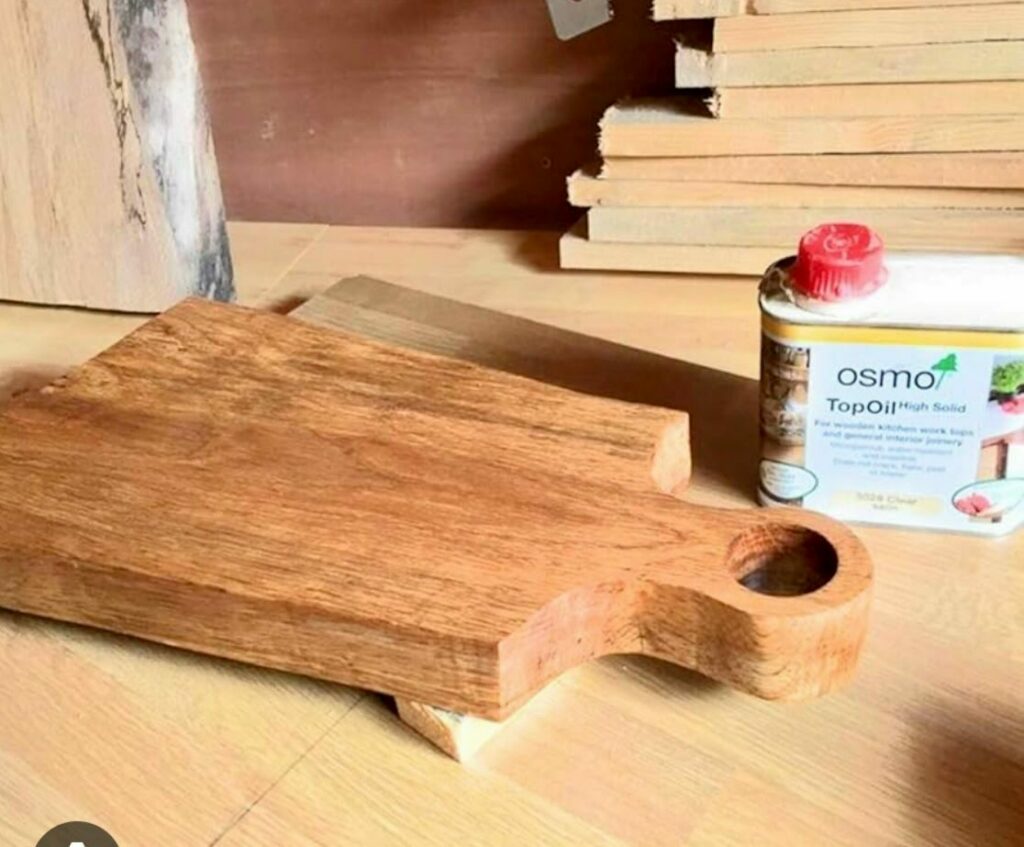
Reducing waste during maintenance and upgrades
- Repair and refurbish: Instead of replacing, consider repairing or refurbishing your worktops. This reduces waste and the demand for new resources.
- Upcycle and Reuse: If you do decide to replace your worktops, think about how the old materials can be repurposed, either in your home or by donating to others.
- Responsible Disposal: For materials that cannot be reused, look for responsible disposal methods. Some materials can be recycled or need to be disposed of in an environmentally friendly manner.
Energy Efficiency in Worktop Care
- Minimise Water Usage: Be conscious of water usage when cleaning your worktops. Using a spray bottle can help control the amount of water and cleaning solution used.
- Efficient Appliances and Tools: When using any appliances for worktop care, such as steam cleaners or sanders, opt for energy-efficient models.
Supporting Eco-Friendly Brands
- Choose Eco-Conscious Brands: Support brands that are committed to sustainability in their products, from cleaning solutions to worktop materials.
- Certified Sustainable Materials: If installing new worktops, consider materials certified for sustainability, like FSC-certified wood or recycled composite materials.
Incorporating these sustainable practices into workplace care not only contributes to a healthier environment but also promotes a safer and more eco-conscious lifestyle. By making small changes in our daily routines and choices, we can have a significant positive impact on the planet.
Conclusion
As we conclude our journey, it’s clear that the heart of your home deserves the utmost care and attention. Whether your worktops are gleaming granite, elegant marble, classic wood, or practical laminate, each material has its own unique charm and specific needs. The longevity and beauty of these surfaces hinge on the right practices in maintenance, repair, and, when the time comes, thoughtful upcycling.
We’ve explored a range of topics, from understanding the nature of different worktop materials to specific cleaning and maintenance strategies. We’ve delved into detailed treatments for wood, innovative ways to refresh laminate and composite surfaces, and the special care required for stone worktops. We also highlighted the importance of professional restoration services for complex repairs and emphasised sustainable practices to ensure our kitchen choices align with environmental consciousness.
Remember, the key to preserving and enhancing your kitchen worktops lies in regular care, prompt repairs, and an understanding of the material’s unique qualities. Your worktops are not just surfaces for food preparation or casual dining; they are an integral part of your home’s story, bearing witness to daily life and special moments.
By implementing the tips and techniques discussed, you can ensure that your worktops remain functional, beautiful, and a source of pride for many years to come. May your kitchen continue to be a place of warmth, joy, and culinary creativity, with worktops that reflect the care and love invested in them.

Get more floor restoration advice…
Sanding
We provide virtually dust-free sanding with our continuous belt machinery with mobile extraction units, giving you a safer environment for your family.
Oiling
This organic finish not only adds beauty to your home but also has exceptional water-repellent characteristics, making it easier to clean and maintain.
Waxing
This natural floor finish offers the softest and most mellow appearance – and leaves your floor able to breath.
Buffing
Using soft buffing machines (and hand-polishing where required) will bring a wonderful sheen to your newly-finished floor.
Repairs
We offer a full assessment of your wooden floors to determine what repairs are needed to provide the perfect working surface for the later stages of sanding, staining and sealing.
Restoration
We offer a comprehensive restoration process designed to address floors that are improperly fitted or damaged over time through wear and tear.
Request a fixed price quote for your wood floor restoration now
Simply enter your postcode below to get started.
Services
Wood Floor Sanding Wood Floor Restoration Wood Floor Scratch Repair Squeaky Wood Floor Repair Parquet Floor Sanding Parquet Floor Restoration Commercial Floor Sanding Church Floor Sanding Community Centre Floor Sanding School Floor Sanding Gap Filling Gap Filling with ResinCopyright © Mr Sander®
Privacy & Cookies Terms & Conditions Complaints Procedure Cancellation Rights Sitemap